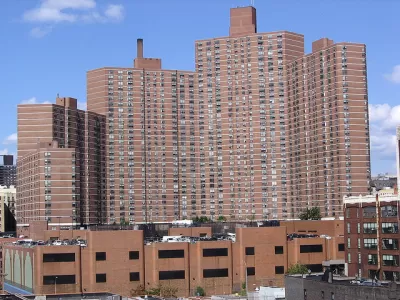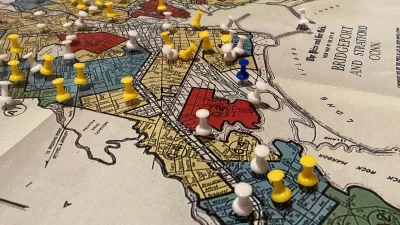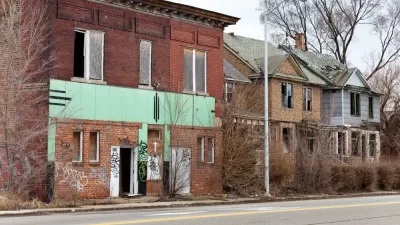Voucher recipients live in slightly better neighborhoods than the average poor household, but they still live in economically and racially segregated neighborhoods with poor-performing schools.

The Housing Choice voucher program was created to give low-income households the opportunity to move out of public housing—where the effects of the cycle of poverty are severe—and into federally subsidized rental units. The program's success depends on both the willingness of landlords in better neighborhoods to offer voucher-subsidized units and for voucher recipients to relocate to better neighborhoods.
However, concentrated poverty and segregation persist. As Elizabeth Kneebone and Natalie Holmes write, voucher recipients' "housing choices remain limited to racially segregated low-income neighborhoods that may not be much different than where they started...Delivering on the potential of the voucher program to improve access to opportunity means grappling with the barriers to mobility that restrict its use."
Kneebone and Holmes compare the conditions of voucher holders with poor families living in rental housing and public housing. They find that across the country, voucher holders live in less concentrated poverty than public housing residents and low-income renters, but they still live in majority-minority neighborhoods where the average poverty rate is between 19 and 29 percent. They cite a Macarthur Foundation study, which finds that voucher holders live near lower-performing schools than poor families overall, but higher-performing schools than public housing residents.
FULL STORY: Promise and pitfalls of housing choice vouchers vary across the nation

Maui's Vacation Rental Debate Turns Ugly
Verbal attacks, misinformation campaigns and fistfights plague a high-stakes debate to convert thousands of vacation rentals into long-term housing.

Planetizen Federal Action Tracker
A weekly monitor of how Trump’s orders and actions are impacting planners and planning in America.

In Urban Planning, AI Prompting Could be the New Design Thinking
Creativity has long been key to great urban design. What if we see AI as our new creative partner?

King County Supportive Housing Program Offers Hope for Unhoused Residents
The county is taking a ‘Housing First’ approach that prioritizes getting people into housing, then offering wraparound supportive services.

Researchers Use AI to Get Clearer Picture of US Housing
Analysts are using artificial intelligence to supercharge their research by allowing them to comb through data faster. Though these AI tools can be error prone, they save time and housing researchers are optimistic about the future.

Making Shared Micromobility More Inclusive
Cities and shared mobility system operators can do more to include people with disabilities in planning and operations, per a new report.
Urban Design for Planners 1: Software Tools
This six-course series explores essential urban design concepts using open source software and equips planners with the tools they need to participate fully in the urban design process.
Planning for Universal Design
Learn the tools for implementing Universal Design in planning regulations.
planning NEXT
Appalachian Highlands Housing Partners
Gallatin County Department of Planning & Community Development
Mpact (founded as Rail~Volution)
City of Camden Redevelopment Agency
City of Astoria
City of Portland
City of Laramie





























